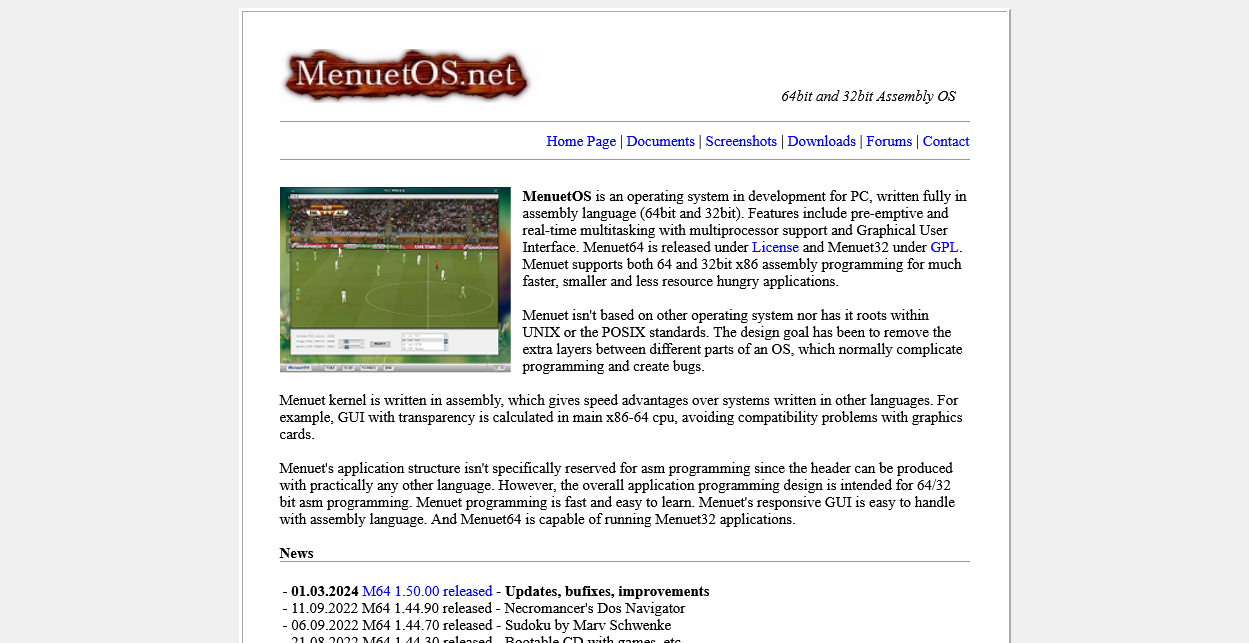 In the vast landscape of operating systems, where complexity often reigns supreme, MenuetOS stands as a beacon of simplicity and efficiency. This remarkable operating system, developed by Ville Turjanmaa, challenges conventional norms by offering a lightweight and compact alternative. This article explores the intriguing world of MenuetOS, delving into its origins, key features, and the unique aspects that set it apart from its counterparts.
In the vast landscape of operating systems, where complexity often reigns supreme, MenuetOS stands as a beacon of simplicity and efficiency. This remarkable operating system, developed by Ville Turjanmaa, challenges conventional norms by offering a lightweight and compact alternative. This article explores the intriguing world of MenuetOS, delving into its origins, key features, and the unique aspects that set it apart from its counterparts.
Origins and Philosophy
MenuetOS made its debut in the early 2000s, with Ville Turjanmaa envisioning an operating system that defied the resource-heavy nature of contemporary systems. The name “Menuet” itself, derived from the French word for a short, musical composition, reflects the OS’s intent to be concise and harmonious.
Key Features
Assembly Language Foundation. One of the defining features of MenuetOS is its development entirely in assembly language. While unconventional in today’s programming landscape, this choice contributes to the OS’s compact size and remarkable speed. Every line of code is meticulously crafted, resulting in an efficient and streamlined system.
Real-time Operating System (RTOS) Capabilities. MenuetOS is designed with real-time capabilities, making it suitable for applications that require precise and predictable timing. This feature is particularly advantageous in scenarios where responsiveness and accuracy are critical, such as embedded systems and real-time data processing.
Graphical User Interface (GUI). Despite its minimalistic design, MenuetOS boasts a graphical user interface that is both intuitive and functional. The GUI includes a file manager, text editor, media player, and other essential tools, providing a user-friendly environment without compromising on performance.

Screenshot of the official MenuetOS website
Multitasking and Multithreading. MenuetOS supports multitasking and multithreading, allowing users to run multiple applications simultaneously. This capability is vital for enhancing user productivity and responsiveness, even on systems with limited resources.
Compact Size. MenuetOS is renowned for its incredibly small size. The entire operating system can fit on a single 1.44 MB floppy disk, showcasing its efficiency in terms of storage requirements. This compact size makes it an attractive option for environments with limited storage capacity.
Extensive Hardware Compatibility. Despite its minimalist approach, MenuetOS exhibits impressive hardware compatibility. It can run on a variety of architectures, including x86, x86-64, and older systems. This versatility makes it a viable option for repurposing older hardware or for specialized use cases.
Unique Aspects
- Live Development Environment. MenuetOS provides a unique live development environment where applications can be created directly within the OS using the integrated programming tools. This feature caters to developers who appreciate the simplicity and immediacy of an all-in-one development and execution environment.
- Community-Driven Development. MenuetOS has garnered a small but dedicated community of enthusiasts and developers. The open nature of its development encourages collaboration, and users can contribute to the ongoing evolution of the operating system.
Conclusion
MenuetOS stands as a testament to the possibilities of minimalist design in the realm of operating systems. Its assembly language foundation, real-time capabilities, compact size, and unique development environment set it apart as a distinctive choice for specific use cases. While it may not compete with mainstream operating systems in terms of features or widespread adoption, MenuetOS remains a fascinating exploration of what can be achieved with simplicity, efficiency, and a visionary approach to design.
